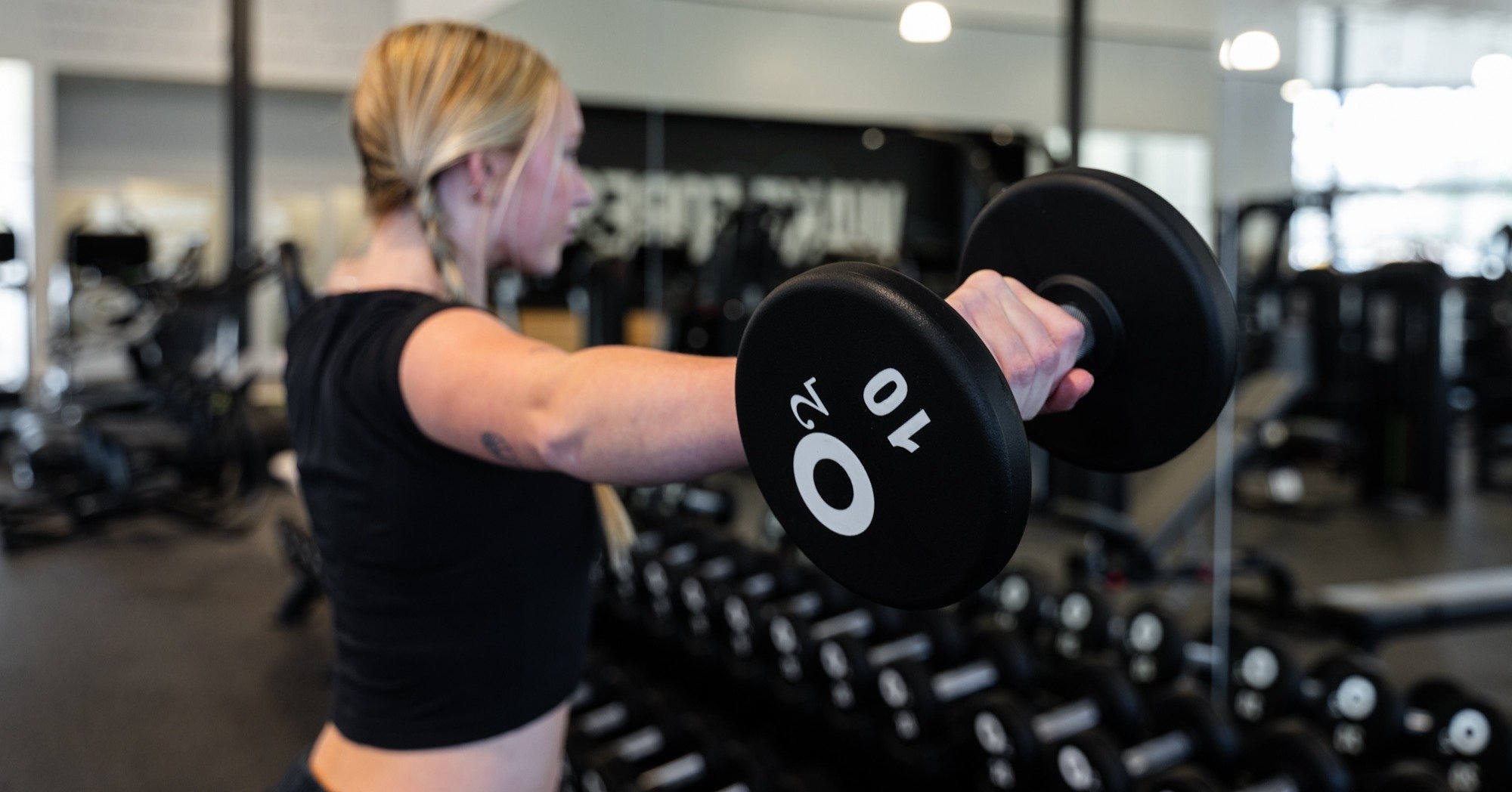Ever wondered what separates a good workout from a great one? For you, the answer could be the mind-muscle connection! You may have heard the term around the gym before, but what exactly is it?
In this blog, we're diving into understanding the "why" and "how" of the mind-muscle connection, along with providing you with our expert tips to harness its full potential in your workouts. So, get ready to unlock the secrets of neuromuscular coordination and elevate your workouts like never before!
Understanding the Mind-Muscle Connection
Your "mind-muscle connection" is a conscious and deliberate muscle contraction. You create the mind-muscle connection when focused on and can feel the tension created during an exercise on a specific muscle or muscle group.
When you focus on specific muscles to create deeper contractions, your mind calls on a higher percentage of muscle fibers to complete the exercise. (This also helps prevent the wrong muscles from being used so your body is able to gain strength in all the right places!)
Why Does the Mind-Muscle Connection Matter?
-
It Helps Enhance Your Performance. When your brain communicates with your muscles, you perform exercises with better form and target the intended muscle groups. This leads to your workouts being more efficient and effective!
-
It Can Help Prevent Injury. The mind-muscle connection helps ensure that the load of an exercise is evenly distributed across the proper muscle groups, which reduces your risk of overloading and injuring a specific muscle or joint.
-
It Benefits Functional Strength. The mind-muscle connection is crucial for everyday activities like lifting groceries, climbing stairs, or even maintaining balance. Strengthening this connection can enhance your functional strength during everyday activities and quality of life.
-
It Helps Keep Your Mind Strong. Maintaining muscle mass and strength is important for our independence and overall health as we age. Keeping the connection between your brain and muscles is essential for keeping (and even improving) these qualities over time!
Tips for Improving Your Mind-Muscle Connection
- Visualize Your Muscles: Close your eyes and try to visualize the muscles you're working. Think about the specific muscle you want this exercise to focus on and keep your attention there throughout the entire movement.
- Start with a Warm-Up Set: Before you start your lift, practicing the movements with lighter weights can help you concentrate on form and muscle engagement.
-
Practice Slow, Controlled Movements: Don't fly through those reps! Slow down the tempo and really focus on practicing the movement with proper form. This allows you to concentrate on your target muscle instead of relying on momentum.
-
Use Cues: Talk yourself through the exercise step-by-step. For example, if you're performing a Romanian Deadlift (RDL), focus on pushing the ground apart without moving your feet to engage your lower body muscles better.
-
Increase Your Time Under Tension: Time under tension is the amount of time you spend during a rep. An easy way to do this is with tempo rep! For example, during Lat Pull Downs, take three counts to pull down and three counts to release the bar back to the starting position.
To sum it up, the mind-muscle connection isn't just some crazy, mental concept; it's a fundamental part of staying fit (mentally and physically) and protecting yourself from injuries. Once you begin practicing the mind-muscle connection in your workout routine, you'll enhance your brain-body communication and can start enjoying the mental and physical benefits it brings.
So, next time you're at the gym, remember these tips and prepare to take your workouts to the next level!







.jpg)
.jpg?width=1200&height=628&name=BTB-Mind-Muscle-Connection%20(1).jpg)

.jpg)

